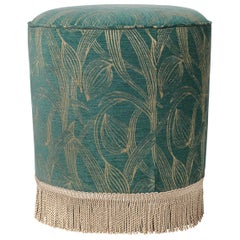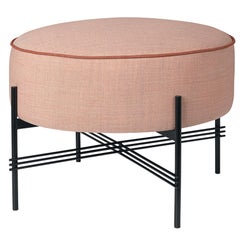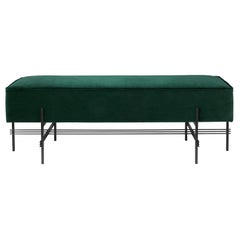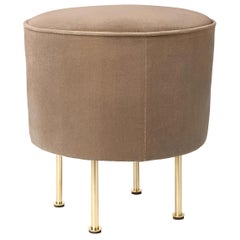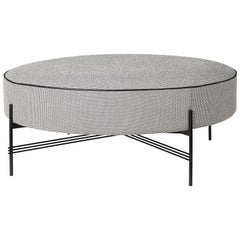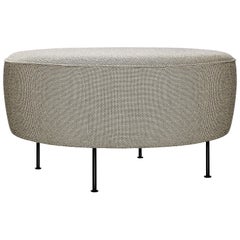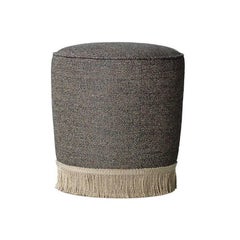Gubi Pouffe
21st Century and Contemporary Danish Mid-Century Modern Ottomans and Poufs
Fabric
21st Century and Contemporary Danish Mid-Century Modern Ottomans and Poufs
Brass
21st Century and Contemporary Danish Mid-Century Modern Ottomans and Poufs
Brass
21st Century and Contemporary Danish Mid-Century Modern Ottomans and Poufs
Brass
21st Century and Contemporary Danish Mid-Century Modern Ottomans and Poufs
Brass
21st Century and Contemporary Danish Mid-Century Modern Ottomans and Poufs
Brass
21st Century and Contemporary Danish Mid-Century Modern Ottomans and Poufs
Brass
21st Century and Contemporary Danish Mid-Century Modern Ottomans and Poufs
Brass
Recent Sales
21st Century and Contemporary Danish Modern Footstools
Upholstery
People Also Browsed
2010s Portuguese Mid-Century Modern Dining Room Tables
Stone, Limestone, Travertine, Marble
2010s American Table Lamps
Brass
2010s British Mid-Century Modern Daybeds
Bouclé, Oak
2010s South African Minimalist Night Stands
Poplar, Burl
21st Century and Contemporary Swedish Mid-Century Modern Table Lamps
Textile
2010s South African Minimalist Night Stands
Wood
2010s American Mid-Century Modern Wall Lights and Sconces
Brass, Nickel, Enamel, Bronze
2010s South African Minimalist Pedestals
Hardwood
21st Century and Contemporary French Modern Chairs
Steel
2010s Oceanic Organic Modern Ottomans and Poufs
Fabric, Foam
2010s South African Minimalist Pedestals
Lacquer
2010s Italian Modern Ottomans and Poufs
Brass, Metal
21st Century and Contemporary French Modern Chairs
Steel
21st Century and Contemporary American Scandinavian Modern Wall Lights a...
Brass
21st Century and Contemporary Italian Organic Modern Chandeliers and Pen...
Brass
2010s Danish Scandinavian Modern Dining Room Chairs
Oak
Gubi Pouffe For Sale on 1stDibs
How Much is a Gubi Pouffe?
Gubi for sale on 1stDibs
Iconic Danish furniture and lighting manufacturer Gubi was founded in Copenhagen by designer-couple Lisbeth and Gubi Olsen in 1967. The brand is celebrated globally for its innovative chairs, lighting fixtures, mirrors, sofas and other furnishings and decor.
The company began as a platform to manufacture the textiles and furniture designed by Lisbeth and Gubi. Soon, the business model broadened. While recent contemporary pieces manufactured by Gubi such as GamFratesi’s Beetle chair have become darlings of today’s interiors, the company is also widely known as a leader in reissuing exquisite Scandinavian and other mid-century modern furniture by a range of design legends.
Swedish architect and interior designer Greta Magnusson Grossman — the first woman to receive a prize for furniture design from the Swedish Society of Industrial Design — emigrated to the United States and built 14 homes in Los Angeles in the postwar era that were inspired by the Case Study Houses. She furnished these homes with her own designs, and her impossibly sleek Grasshopper table lamps and floor lamps — created for Barker Bros. but today made by Gubi — were frequent fixtures in the interiors. Another Scandinavian architect and industrial designer, Louis Weisdorf designed the wildly popular Multi-Lite line of lighting fixtures, which were originally created during the early 1970s and reissued by Gubi in 2016.
Beyond lighting, Spanish designer Barbara Corsini created the distinctively geometric Pedrera coffee table during the mid-1950s that is now made by Gubi, while the Hungarian-born French master of postwar design, Mathieu Matégot, created the Tropique dining table and an elegant three-legged Nagasaki chair, both of which were reissued by the Danish brand. French furniture designer Pierre Paulin created the inviting, organically shaped Pacha lounge chair in 1975. This design yielded a loveseat and a sofa as well. All of these pieces were reissued by Gubi.
Since 2001, Gubi founders’ son, Jacob Olsen, has managed the company, and travels the world to find heirs to the iconic designers of yesteryear in order to secure permission to give their works a second life.
A Close Look at Mid-century-modern Furniture
Organically shaped, clean-lined and elegantly simple are three terms that well describe vintage mid-century modern furniture. The style, which emerged primarily in the years following World War II, is characterized by pieces that were conceived and made in an energetic, optimistic spirit by creators who believed that good design was an essential part of good living.
ORIGINS OF MID-CENTURY MODERN FURNITURE DESIGN
- Emerged during the mid-20th century
- Informed by European modernism, Bauhaus, International style, Scandinavian modernism and Frank Lloyd Wright’s architecture
- A heyday of innovation in postwar America
- Experimentation with new ideas, new materials and new forms flourished in Scandinavia, Italy, the former Czechoslovakia and elsewhere in Europe
CHARACTERISTICS OF MID-CENTURY MODERN FURNITURE DESIGN
- Simplicity, organic forms, clean lines
- A blend of neutral and bold Pop art colors
- Use of natural and man-made materials — alluring woods such as teak, rosewood and oak; steel, fiberglass and molded plywood
- Light-filled spaces with colorful upholstery
- Glass walls and an emphasis on the outdoors
- Promotion of functionality
MID-CENTURY MODERN FURNITURE DESIGNERS TO KNOW
- Charles and Ray Eames
- Eero Saarinen
- Milo Baughman
- Florence Knoll
- Harry Bertoia
- Isamu Noguchi
- George Nelson
- Danish modernists Hans Wegner and Arne Jacobsen, whose emphasis on natural materials and craftsmanship influenced American designers and vice versa
ICONIC MID-CENTURY MODERN FURNITURE DESIGNS
- Eames lounge chair
- Nelson daybed
- Florence Knoll sofa
- Egg chair
- Womb chair
- Noguchi coffee table
- Barcelona chair
VINTAGE MID-CENTURY MODERN FURNITURE ON 1STDIBS
The mid-century modern era saw leagues of postwar American architects and designers animated by new ideas and new technology. The lean, functionalist International-style architecture of Le Corbusier and Bauhaus eminences Ludwig Mies van der Rohe and Walter Gropius had been promoted in the United States during the 1930s by Philip Johnson and others. New building techniques, such as “post-and-beam” construction, allowed the International-style schemes to be realized on a small scale in open-plan houses with long walls of glass.
Materials developed for wartime use became available for domestic goods and were incorporated into mid-century modern furniture designs. Charles and Ray Eames and Eero Saarinen, who had experimented extensively with molded plywood, eagerly embraced fiberglass for pieces such as the La Chaise and the Womb chair, respectively.
Architect, writer and designer George Nelson created with his team shades for the Bubble lamp using a new translucent polymer skin and, as design director at Herman Miller, recruited the Eameses, Alexander Girard and others for projects at the legendary Michigan furniture manufacturer.
Harry Bertoia and Isamu Noguchi devised chairs and tables built of wire mesh and wire struts. Materials were repurposed too: The Danish-born designer Jens Risom created a line of chairs using surplus parachute straps for webbed seats and backrests.
The Risom lounge chair was among the first pieces of furniture commissioned and produced by celebrated manufacturer Knoll, a chief influencer in the rise of modern design in the United States, thanks to the work of Florence Knoll, the pioneering architect and designer who made the firm a leader in its field. The seating that Knoll created for office spaces — as well as pieces designed by Florence initially for commercial clients — soon became desirable for the home.
As the demand for casual, uncluttered furnishings grew, more mid-century furniture designers caught the spirit.
Classically oriented creators such as Edward Wormley, house designer for Dunbar Inc., offered such pieces as the sinuous Listen to Me chaise; the British expatriate T.H. Robsjohn-Gibbings switched gears, creating items such as the tiered, biomorphic Mesa table. There were Young Turks such as Paul McCobb, who designed holistic groups of sleek, blond wood furniture, and Milo Baughman, who espoused a West Coast aesthetic in minimalist teak dining tables and lushly upholstered chairs and sofas with angular steel frames.
Generations turn over, and mid-century modern remains arguably the most popular style going. As the collection of vintage mid-century modern chairs, dressers, coffee tables and other furniture for the living room, dining room, bedroom and elsewhere on 1stDibs demonstrates, this period saw one of the most delightful and dramatic flowerings of creativity in design history.
Finding the Right Ottomans-poufs for You
Antique and vintage ottomans and poufs add comfort and style to any living room, game room, home office or minimalist lounge space. An ottoman is a short seat or footstool that is also often used to store items. A pouf is similar, but it’s typically more petite than an ottoman, usually without the storage space inside.
When one thinks of the Ottoman Empire, it’s easy to overlook the iconic seat named for the region. The ottoman — originally an upholstered seat or small bench without a back or arms — was a family’s main seating furniture, a way to merge floor seating with cushions and mats. It wasn’t until they were brought to Europe from Turkey, during the 18th century, that it became popular to join ottomans with other pieces of furniture, such as at the base of a chair. Eventually, these footrests were transformed into storage furnishings to organize quilts and blankets or other textiles. Furniture makers crafted their ottomans with lids that revealed a hidden cupboard, which rendered them both comfortable and practical.
Poufs, which appeared in France during the 1840s, are also of the low-platform seating variety. These versatile furnishings have been made available in all manner of shapes and sizes over time, and depending upon their firmness can be used as a side table should an occasion call for an extra one. However, your average ottoman is almost always firmer than a pouf, and even if the plush pouf in your living room feels sturdy, it’s probably not the best surface for your early-evening cocktail.
Both ottomans and poufs can help create an inviting and warm atmosphere in your living space. For the smaller rooms that are characterized by a casual feel, a shaggy or woven wool pouf might be a better choice, as it’s likely to be more compact and floor-cushion-like than an ottoman. The latter are often larger and more table-like and are comparatively a good fit for a more formal room such as a library or a study. Today, you might find that an ottoman works well in your bedroom, where there isn’t room for a sofa, or perhaps it can serve as a reliable perch in front of your vintage vanity table.
Whatever your seating needs are, find a collection of antique, new and vintage ottomans and poufs in varying styles on 1stDibs that include neoclassical, Industrial and mid-century modern. From the bright colors and bold patterns deployed by Milan-born designer Lorenza Bozzoli to the classy leather furnishings created at family-run Brooklyn, New York, atelier Moses Nadel, there is an endless range of these lovable low stools that merge seamlessly with most decor.
